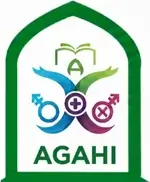Motorcycle Riders Licenses Cancellation Plans Halted
The decision to retain a motorcycle license is not a one-time event but an ongoing process influenced by various factors, including local laws, rider behavior, and safety regulations. While riding a motorcycle offers a unique sense of freedom, it also presents a higher risk of accidents and injuries compared to other modes of transportation. To address these risks, authorities often implement strict rules and procedures to ensure riders are both skilled and responsible.
In light of these concerns, efforts to improve road safety and reduce corruption have led to stricter licensing requirements, such as the mandatory completion of Motorcycle Safety Foundation courses. Some regions are also considering tiered license systems, requiring riders to gain experience on less powerful motorcycles before progressing to more advanced models. Recently, in a move welcomed by many, Motorcycle Riders Licenses Cancellation Plans Halted, reflecting a shift in policy toward retaining and improving rider competency rather than revoking licenses outright.
The role of training and experience
Research on the effectiveness of motorcycle training programs has yielded mixed results, but many studies show that riders who have recently participated in a training program are less likely to have a serious accident. Additionally, the rider’s experience plays a significant role. As a rider progresses through the course, the amount of time they spend on their hands typically decreases. This emphasizes not only the importance of initial training but also the importance of continuous practice and skill development. It’s not just about passing the test; it’s about being a safe and skilled rider for years to come. Once a rider has a license, they can gain experience on everything from small motorcycles to larger vehicles.
AGAHI Pakistan: Building a Better Future Through Knowledge, Communication, and Foresight

Bike rider violations and the effects of age
Traffic violations are a major reason for motorcycle license suspensions or revocations. Many drivers use a point system where a certain number of points is accumulated for offenses such as speeding and reckless driving. They can also be the basis for a different license. Additionally, some research shows that younger riders are at a higher risk of accidents. This is why many licensing laws have specific provisions for riders under a certain age, such as requiring a permit or restrictions on them not being able to learn the details of a motorcycle, and not being able to ride a motorcycle. The government has also set a certain age for this.
Fines for motorcyclists
Motorcyclists are boys who are below the government age limit, so they cannot ride a motorcycle. If they violate such rules, they can be fined and punished. Therefore, having a license shows that the child is of age and is allowed to ride a motorcycle or not. If he violates the law, he faces many fines and punishments.
Maintaining a motorcycle license
The roar of a motorcycle engine, the feel of the open road, and the freedom of two wheels – it’s an experience unlike any other. But with that freedom comes great responsibility, and at the heart of that responsibility is the validation of motorcycle licenses. The debate over the need and effectiveness of maintaining these licenses is more than just a bureaucratic debate. It’s a conversation about safety, skill, and the future of riding.
Conclusion
After carefully considering all factors, it’s clear that the decision to retain a motorcycle rider’s license should be based on a holistic assessment that prioritizes safety, skill, and continuous improvement. While a single lapse in judgment shouldn’t automatically lead to permanent revocation, there must be a robust system in place to address repeated offenses or egregious violations that endanger the public.
A tiered approach, combining remedial training, mandatory refresher courses, and periodic re-testing, offers a more balanced and effective solution than outright license retention. This model would allow riders to demonstrate their commitment to safe practices and provide them with the tools needed to correct bad habits, all while ensuring that only those who are truly fit to be on the road are granted the privilege to ride. Ultimately, the goal isn’t to punish riders, but to foster a culture of accountability and responsible riding that protects everyone on the road.

